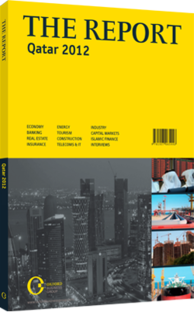OBG talks to Ebrahim Al Sulaiti, CEO, United Development Company

Interview: Ebrahim Al Sulaiti
What efforts are being made to minimise the environmental impact of the construction industry?
EBRAHIM AL SULAITI: There are a number of government-approved environmental policies and procedures, concerning items such as waste and liquid management, recycling and green cleaning, as well as a ban on the use of non-degradable plastic bags. Recycling infrastructure is also encouraged in new developments. The value of greenery and “green” architectural features in large-scale developments is significant – temperatures can be around 8°C lower than in other parts of the capital, resulting in tremendous energy savings.
How do you rate the government’s efforts to enforce energy efficiency standards?
AL SULAITI: Qatar’s primary objective is to promote a comprehensive approach to construction that preserves the identity of the past while reflecting the needs of the future. This objective can be met only by creating a sustainable building environment that minimises ecological impact and also addresses specific regional environmental needs. The “green building” concept is not new to Qatar. If you visit some of our historical sites, you will notice that the traditional Qatari architecture was designed with a sustainable approach. For example, the architectural practices from the past paid attention to the climate (sun and orientation), design (compact cities, shading and narrow streets) and natural ventilation. We all know that poor building material standards produce low-quality buildings. Therefore, full compliance with Qatari standards will go a long way to securing customer satisfaction and long-term demand.
In the current environment, is it possible to pass on the rise in building material costs to the end user?
AL SULAITI: The building sector is a key pillar in Qatar’s growth. Therefore, any major rise in building material prices will always create a challenge, and passing the cost to the end user under the current environment of a slow but gradual recovery of the real estate market will not be easy. I am confident the construction sector will continue its upward climb, but rising costs for key building materials could rain on the industry’s parade if not managed properly. In robust and healthy real estate markets, builders would simply raise prices to manage increasing costs. However, this strategy may need to be employed judiciously until the market fully recovers from the recent global financial crisis.
What are the major trends in financing for contractors and developers in Qatar?
AL SULAITI: Most of the large development projects are government-driven and government-funded. Bank debt and foreign investment funds have been a source of financing for some private sector property developments. However, for most private sector project financing, money comes from foreign and local banks using both conventional and Islamic financial structures.
What effect does the relatively undeveloped mortgage market have on the housing sector?
AL SULAITI: As you know, most GCC countries, including Qatar, rely to a large extent on expatriates who until recently were not able to buy property locally. Therefore, the market could not profitably support the establishment of a fully-fledged mortgage service. But a major driver in the mortgage market has been the introduction of the concept of freehold property in the early 2000s by some GCC countries, including Qatar. Following the freehold property announcements, several dedicated mortgage providers were established and retail banks started to aggressively enter this space as well. Many of the banks up to that point were content with providing personal finance from five to seven years, designed to meet their customer’s housing finance requirements. In my view, the opening up of the mortgage industry would encourage more national and international private players to invest in the housing and mortgage industry in Qatar and the region.
You have reached the limit of premium articles you can view for free.
Choose from the options below to purchase print or digital editions of our Reports. You can also purchase a website subscription giving you unlimited access to all of our Reports online for 12 months.
If you have already purchased this Report or have a website subscription, please login to continue.

